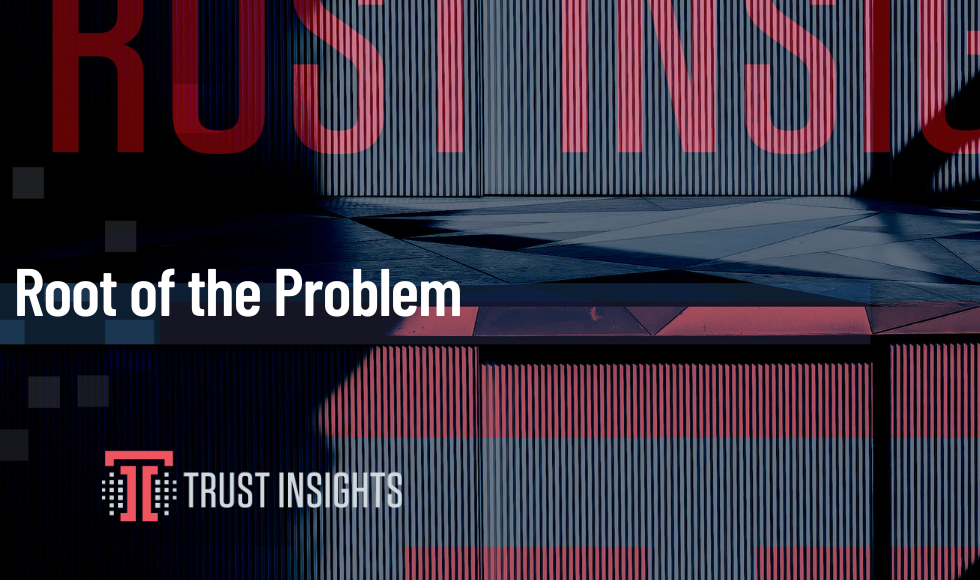This data was originally featured in the June 5th, 2024 newsletter found here: INBOX INSIGHTS, JUNE 5, 2024: ROOT OF THE PROBLEM, GENERATIVE AI DATA
Over the weekend, I noticed that I had poison ivy growing within my hydrangeas. I wanted it gone. I’m allergic to poison ivy and being an invasive plant, it spreads fast if you don’t remove it. After putting on disposable gloves, I started pulling out the plant. The leaves can be small and unassuming. I pulled up as many as I saw, disposed of them, and patted myself on the back for a job well done (after washing my hands).
When I went out the next day, I saw new growth. I thought I’d gotten it all, but I’d clearly missed something. Again, with a fresh set of gloves, I pulled the plant. The new leaves came up easily. But, this is the same thing I did the day before, right? And it didn’t work. That’s why I’m doing this all over again.
Here’s the thing about poison ivy. The plant isn’t deep, but its roots spread wide. The roots of a single plant can spread 20 feet underground. Yikes! Only pulling what you can see isn’t going to cut it. There’s a lot more buried underground, waiting to surface over and over.
The root of my problem is a literal root. A little on the nose, right?
When companies start evaluating solutions, the root of the problem is often missed. Shiny object syndrome gets the best of us as we get swept up in the excitement of what’s possible.
You have to dig. You can pull at the leaves that you can see, but your problems likely go deeper. This is where user stories really shine.
As a reminder, a user story is a simple, three-part sentence.
As a [persona], I [want to], so [that].
This is a great way to back into the Trust Insights 5P Framework when your purpose is a little murky.
The 5Ps are Purpose, People, Process, Platform, and Performance. A user story neatly maps to the 5Ps. The “persona” tells you the people. The “want to” tells you process and platform. The “that” tells you the purpose and performance. You can reverse engineer the 5Ps by generating a series of user stories.
When creating user stories, many people get as far as “As a [persona], I [want to]”. The last part of the sentence, which is the intention, gets forgotten. This is when you start solving for the wrong problem, or not getting to the root. Why did I want the poison ivy gone? What would happen if I keep letting it come back?
I could go outside every day and only pull out the leaves of the poison ivy that I see. But it will keep coming back. I have to dig. I have to do my research. I have to explore the options. If my goal is to be rid of this plant altogether, pulling the leaves when I see them won’t work.
When I went out for the second time to pull up the poison ivy, I dug deeper. I found the root of the plant. It was huge! Since I pulled that out, I haven’t seen any more leaves lurking about.
I thought about using AI as an example this week, but it’s true for any business problem. Unless you’re digging deep and getting to the root, you’re not solving the right problem. Keep asking why. Dig into the intention. Find the root.
Why do you want to use AI? Is it because everyone else is, or do you have a solid user story? Why do you need a new CRM? Is it lacking functionality, or aren’t you using everything you have? Why isn’t Google Analytics telling you what you need to know? Is it an infrastructure issue, a data issue, or it’s a human issue? Outline your intentions. Get to the “why”. Keep digging so that you’re solving the right problem.
Are you getting to the root of your problems? Reach out and tell me, or come join the conversation in our Free Slack Group, Analytics for Marketers.
– Katie Robbert, CEO








